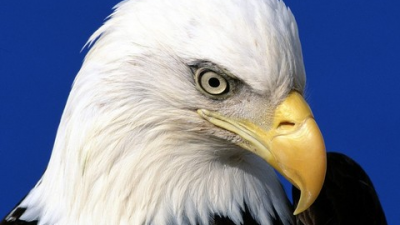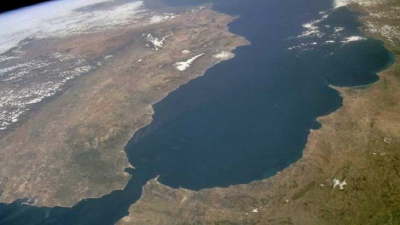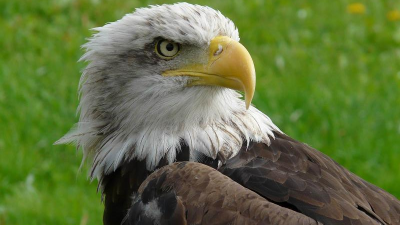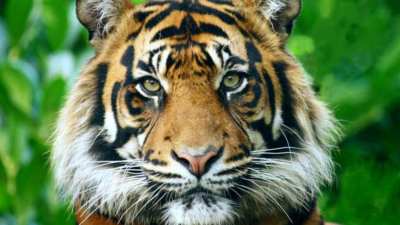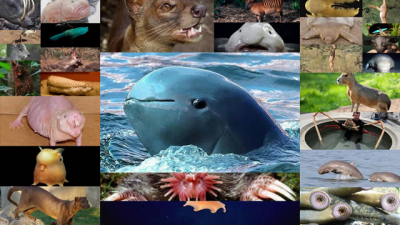The most famous species of eagles in the world.
|
OTHERS
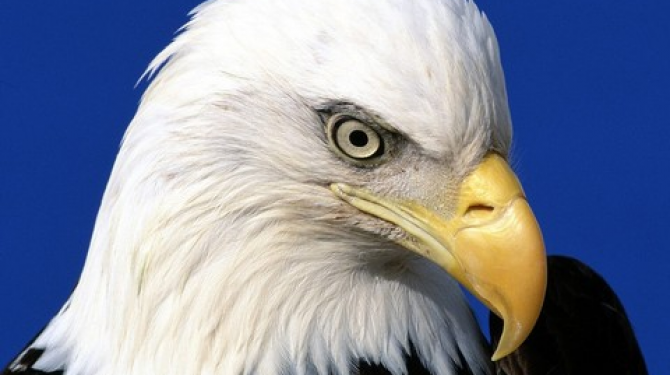
Source: listas.20minutos.es
The eagles are the largest predatory birds. They can be found almost anywhere on the planet except Antarctica. Like all birds of prey, eagles have a large, powerful and pointed beak to loosen the flesh of their victims, in addition to having powerful claws. In their physiology it is important to highlight their strength, which makes it possible to lift prey that are heavier than them in flight. They have an extremely sharp view that allows them to visualize their objectives at a great distance. In this list I show you the types of eagles that exist, which is the most beautiful?
TOP 27:
Colored crab hawk.
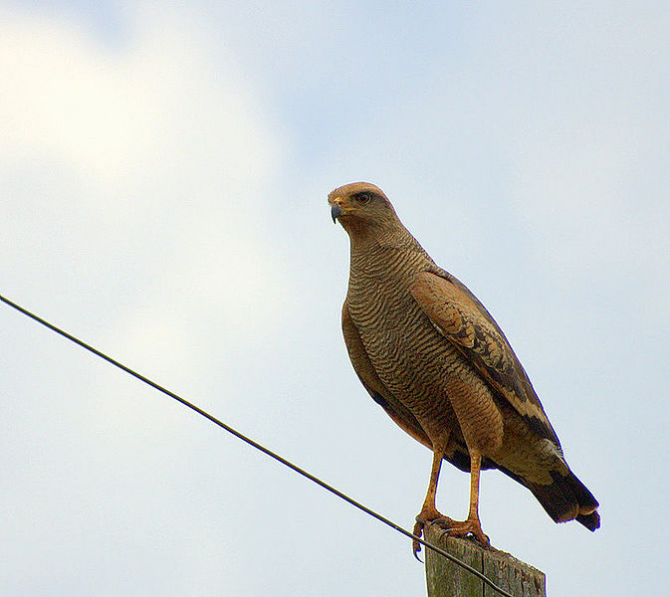
It is a species of falconiform bird of the Accipitridae family widely distributed in South America, where it is possible to observe it from Panama to the center of Argentina.
TOP 26:
Brown eagle.
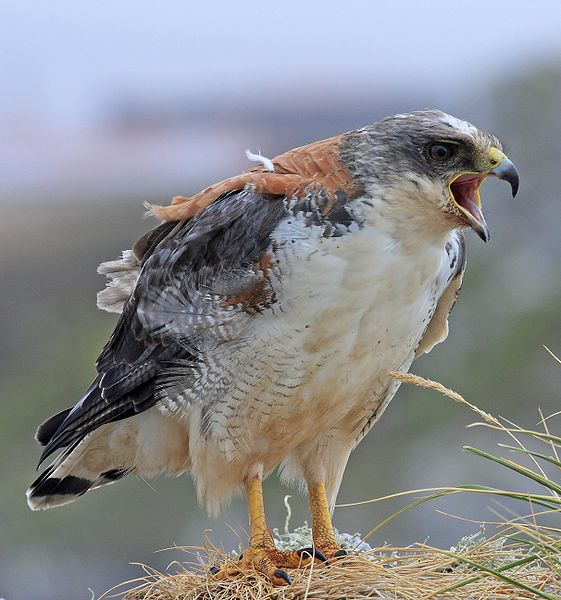
It is a species of falconiform bird of the Accipitridae family. Approximate size to 50cm, with the lower parts clear and the upper ones gray. The female is distinguished by having the shoulders and part of the back of tan, although sometimes that color is seen in the immature. It is distinguished by the white tail with horizontal black thin stripes and a subterminal black band on the tail. It goes through several phases in its development varying in colors between gray, rufous and brown. He is a very good hunter, he lives near bushes, forests, high altitude accidents and wooded plains. It feeds on small mammals, reptiles, small birds, invertebrates and amphibians no bigger than a rabbit. To hunt, it flies circularly over its target and launches diagonally over it to strike it with its powerful claws. When flying it unfolds the wings in all its length, similar to the vultures. It lives throughout South America and in various elevations although it is more frequent in the coastal areas and the lower areas of the Andes.
TOP 25:
Eagle aliancha.
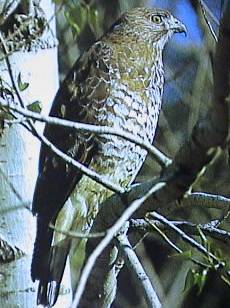
It is a species of falconiform bird of the family Accipitridae of short but sharp tip, carnivorous and its plumage is white with black and sometimes yellow. In summer they are distributed over eastern North America, as far west as Alberta and Texas; then they migrate south in winter to the Neotropics of Mexico south of Brazil. Several of its subspecies in the Caribbean are endemic and do not migrate. The adult measures 34 to 45 cm, weighs 265 to 560 g and a wingspan of 8 to 10 dm. As with most raptors, the female is slightly larger than the male. The adult has dark brown color and eventually black and white bands in tail. There are lighter forms that are confused with Buteo lineatus, but that species has more lines in bars, and in wings. It has relatively short, wide wings. They hunt by waiting on a perch and watching their prey, and attack by descending rapidly. They rarely chase their prey in flight. Variable diet, small mammals, like rodents are their regular prey. More than other North American buzzards, amphibians, reptiles, insects and other invertebrates are important prey. Birds, even of their own size (although usually much smaller), are also hunted successfully.
TOP 24:
Great crab-eating hawk.
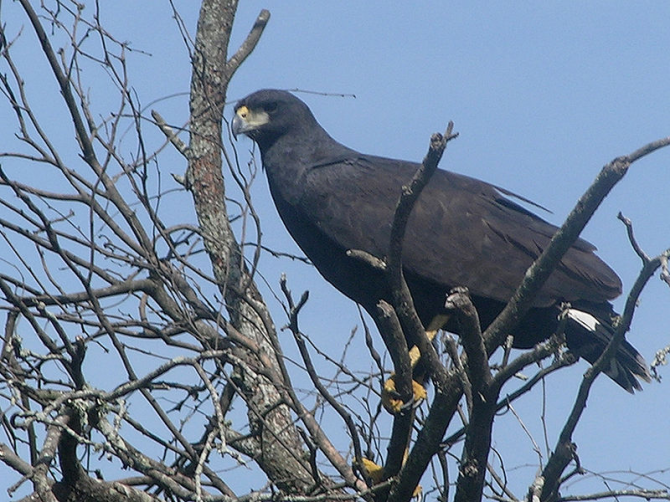
It is a species of falconiform bird of the Accipitridae family widely distributed in the Neotropical region (Ibero-America), where it is possible to observe it from Mexico to Argentina passing through Central America and a good part of South America.
TOP 23:
Eagle kapulera.
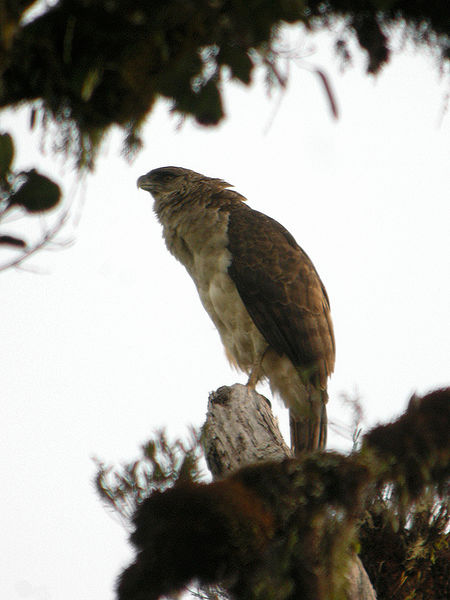
It is a species of falconiform bird of the Accipitridae family, the only one of the genus Harpyopsis. It is a bird of grayish prey endemic to New Guinea, where it lives in natural tropical forests located at high altitude. It is the maximum predator in its habitat. It feeds mainly on phalangéridos (called kapul in the local language). It is one of the largest eagles, often exceeding 90 cm in length. The females are slightly larger than the males. The New Guinea eagle is grayish in color with brown highlights, it has a complete crest, broad wings, strong bill and a wide iris. Its tail is long and rounded, white below. Their strong naked limbs have sharp claws.
TOP 22:
Red-tailed Mouser
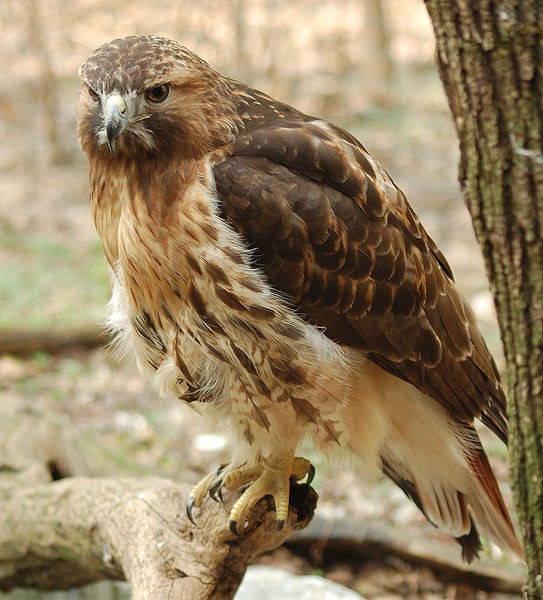
It is a species of Falconiformes bird of the Accipitridae family widely distributed from Alaska to the Antilles. It is one of the most abundant raptors and most used in falconry in North America. The plumage of juvenile and adult is very similar for all the subspecies, although these last ones usually have the widest wings and the shortest tail; the only important variations between juveniles and adults are the color of the tail (it is not red yet) and the abdominal band that is usually more marked in young people than in adults of the same subspecies. The males and the females are similar in terms of plumage. The red-tailed buzzard gets its name due to the color of the upper surface of its tail, a tone that ranges from an orange red or even pale pink to a deep red, and that normally appears from the year of age or second autumn with the first moult, appreciating in some cases completely in the second moult. In the great majority of adult specimens at the end of its tail appears a wide and dark band of black color. The lower surface of its tail is an intense white, which in some specimens becomes a silver color. Being one of the most abundant raptors in the United States, it is not surprising that it is also one of the raptors most used in falconry outside of Spain, especially in North America and the United Kingdom, both by beginners and well-known masters of falconry, plus of being used frequently in exhibitions.
TOP 21:
European short-toed eagle.
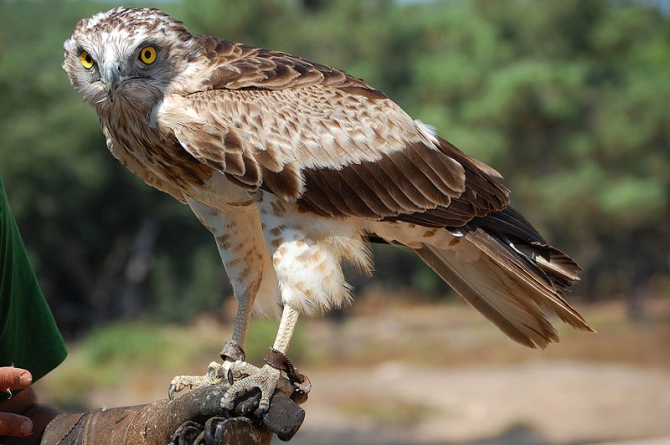
It is a species of falconiform bird of the Accipitridae family. It is a raptor specialized in the hunting of snakes and other reptiles. It is a large raptor, between 62 and 70 cm in length, and 166-188 cm in span, with males being smaller than females. Contrast the brown of the back with the white with dark bars of the lower parts. The wings are long and wide. It has banded tail, straight end, and wide head with dark cap to the chest. The eyes have yellow iris, and their disposition is more frontal than in other diurnal raptors. Widely distributed in Europe, winter in sub-Saharan Africa between September and April. In the east it extends to India, where its presence is maintained throughout the year. It inhabits open areas of Mediterranean climate, where there is low scrubland, wastelands and clearings, close to the forest masses where it breeds. It prefers zones less than 2,000 meters above sea level and with low rainfall, since these conditions favor the presence of the ophidians from which it feeds mainly.
TOP 20:
Red eagle.
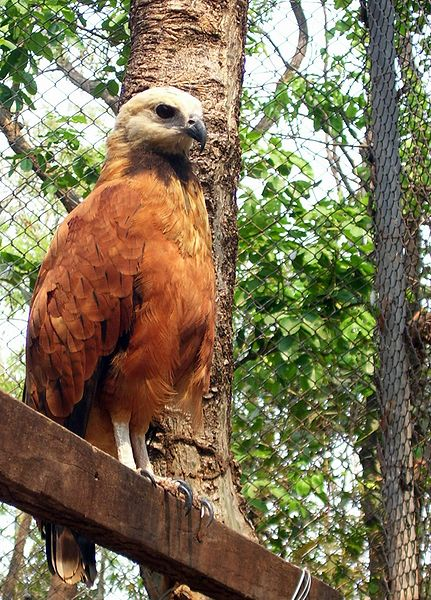
It is a species of falconiform bird of the family Accipitridae the only one of the genus Busarellus. It is widely spread throughout the Neotropical Region, from Mexico to Uruguay (where its presence is uncertain). Its population is estimated between 100,000 and 1,000,000 copies.
TOP 19:
White-tailed Hawk.
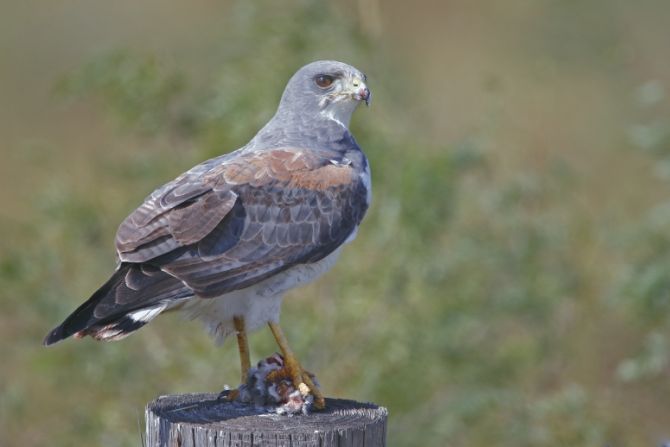
It is a species of Falconiformes bird of the Accipitridae family widely extended by almost all America. It can be found from northern Argentina to Texas.
TOP 18:
Black harrier
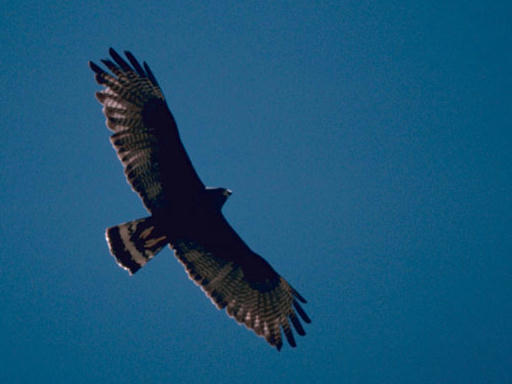
It is a species of falconiforme bird of the Accipitridae family that lives from the south of the United States to Bolivia, Paraguay and Brazil. In both sexes the plumage is almost all black except the last feathers under the wings, has short yellow legs and a yellow beak with black tip, the young specimens have a lighter color. It feeds on chicks of birds, small mammals and small reptiles. It lives in mountains, open fields and near rivers and lagoons. Nest in the tall trees, where he builds a platform made of sticks and reeds, the female places 2 white eggs.
TOP 17:
Lobster hawk.
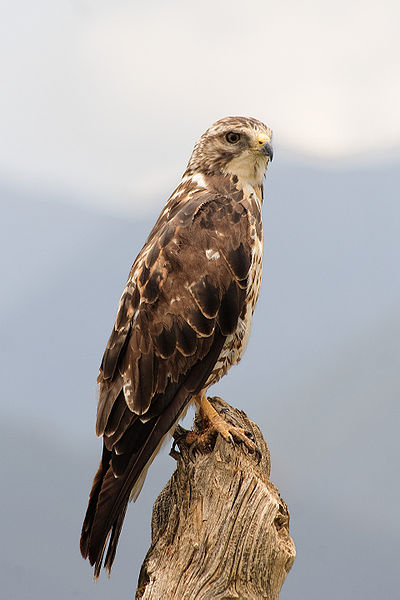
It is a species of falcon-like bird of the Accipitridae family of America. In summer, it inhabits large regions of Canada, the United States and Mexico, spending the winter in southern Brazil, Uruguay, Chile and the Argentine Pampa. It is a large raptor with wide and long wings, conspicuous chest strip and tail with narrow stripes, tips of the dark remiges (normal phase). Its weight is approximately one pound. The Swainson's Hawk diet varies according to the season; in the breeding season it feeds mainly on mammals (rabbits, prairie dogs and bats, among others) while in the non-breeding season it feeds mainly on insects (grasshoppers, dragonflies, locusts and beetles), some other invertebrates, occasionally mammals (rodents) and birds. His most common hunting technique is to launch from a perch, also takes insects in the air. You can also catch insects when they walk awkwardly on the ground. Although it is believed that during its flight from the south of the United States to South America it does not feed, it is unlikely that it will not feed in flight. There are records for Colombia of grasshopper findings in the stomach content of one of these hawks.
TOP 16:
Crested eagle.
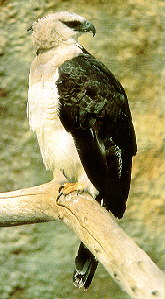
It is a species of falconiform bird of the Accipitridae family of the Neotropical region. It is isolated in Guatemala, Belize, El Salvador, Honduras, Nicaragua, Costa Rica, Panama, Colombia, Venezuela, Guyana, Suriname, French Guiana, Brazil, this Andean from Ecuador, Peru, Paraguay, Bolivia, north of Argentina.
TOP 15:
Short-tailed busardo.
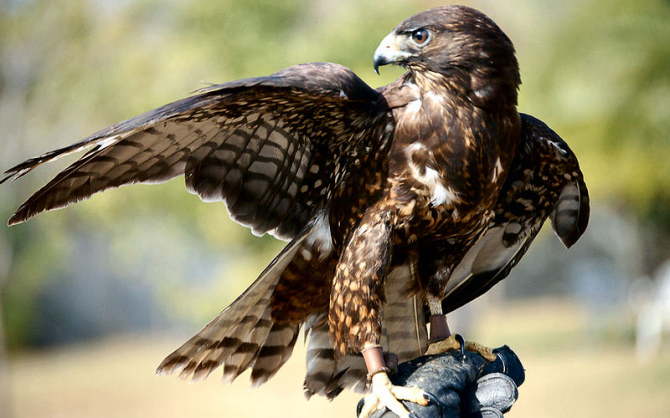
It is a species of Falconiformes bird of the Accipitridae family that lives in great part of America. It is a small busardo, around 16 cm long and 90 cm in span. The males with an average weight of 400 g and the females around 500 g, but the difference in size is smaller than in most birds of prey and the sexes are indistinguishable in the field. It has broad rounded wings, the tips of which curve upward while ascending, and a broad tail, which despite the common name of the bird, has an average length of a busardo in proportion to the body. His claim is a sharp cry similar to that of other raptors. The clear shape has a dark brown back. The lower parts are white, except that tail and flight feathers are dark gray, barred. The immature plumage is similar to that of adults, but the face has spots, and the tails of the tail are of equal width, while the adult has a thickening near the tip of the tail.
TOP 14:
Booted eagle.
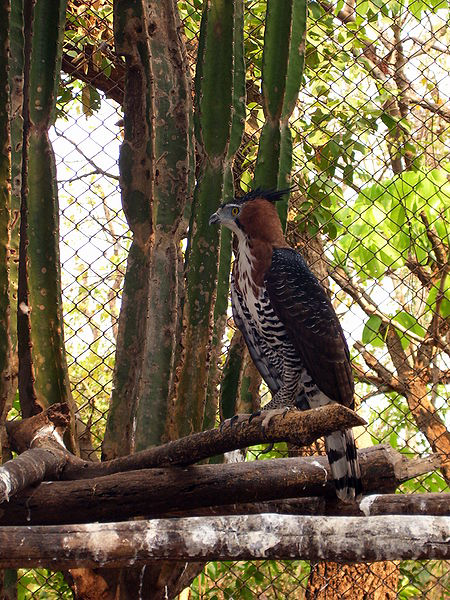
It is a species of falconiform bird of the Accipitridae family that lives in humid tropical climates from southern Mexico, Trinidad, Tobago, southern Peru and Argentina. Build large nests protruding in trees. It is a medium to large predator between 60 to 70 cm in length, and a weight of around 1.2 kg. It has a dark brown or chocolate back and satiny black wings, somewhat larger than those of a goshawk; the lower parts with a beautiful mottled in thick black and white bands; a pair of black "whiskers" that delimit a white gorget, and a black crest that rises when excited. The legs are stout and leathery, with nails of considerable size, feathered to the torso. The long bill and the amber eyes framed by deep superciliary arches resemble the head of an eagle. In flight, the wide and rounded wings as well as the tail show a design in bands of color similar to that of other raptors. Their prey are mainly birds (from the size of the pigeon to that of a heron, passing by roosters, macaws and toucans), as well as small and medium-sized mammals, reptiles and invertebrates.
TOP 13:
Bonelli's Eagle.
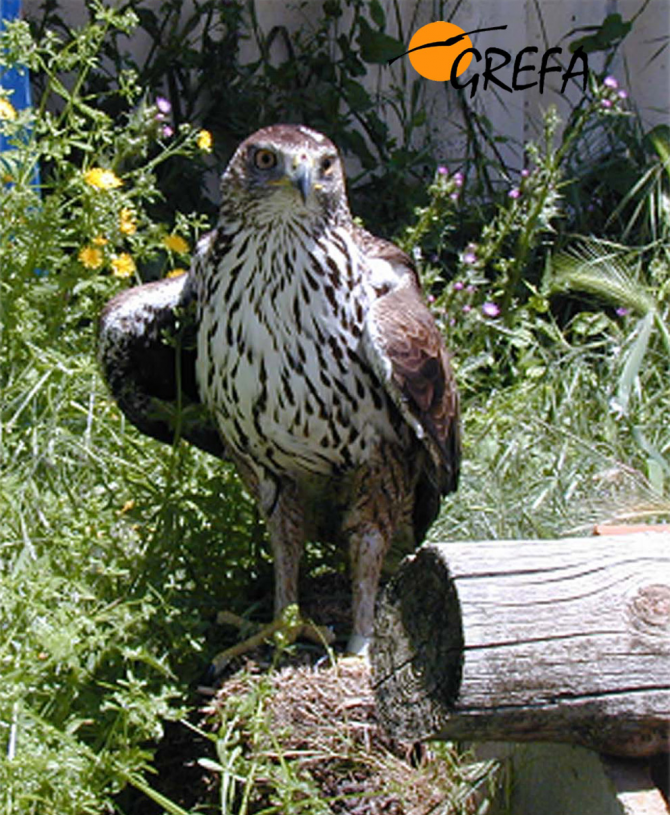
It is a species of falconiform bird of the Accipitridae family that lives from the Mediterranean basin to Southeast Asia. It is a diurnal raptor of about 70 cm in length, weighing between 1.6 and 2.2 kg. Large and strong in appearance, adults have light brown backs and lighter, yellowish-white undersides with dark lines. Hunting rabbits, pigeons, partridges and lizards. It breeds on rocky walls, rarely on trees.
TOP 12:
Lonely crowned eagle.
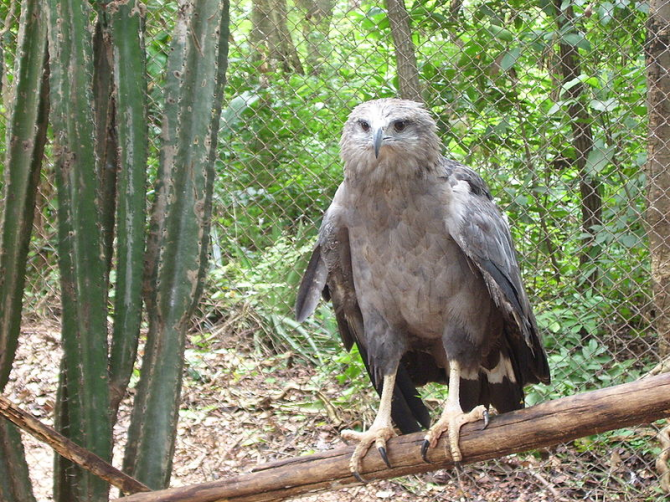
It is a species of falcon-like bird of the family Accipitridae native to South America, which is in danger of extinction due to poaching and destruction of its habitat. It is large, reaching the female from 80 to 85 cm and the male from 75 to 79 cm in length. It has long and wide wings, and the tail cuts. The head is ashen, with a prominent and nourished crest. The back is grayish, and the gray belly mottled with brown. The wings are slate gray, darker than the body, with the black tip. The tail is dark, with a very clear whitish band in the middle section, a black subterminal band and the white tip. The beak is black, and the wax yellow, like the legs. The juvenile plumage is more brown, with the dark back, the head, throat and whitish belly with brown streaks. It feeds on mammals, rodents and reptiles, without neglecting carrion. Live alone or in pairs. Build the nest at the top of the trees with good sized branches, usually on a nest of common parrot, forming a solid base that covers with plumage and herbs. The female lays a single egg, white speckled gray and ocher.
TOP 11:
Verreaux eagle.
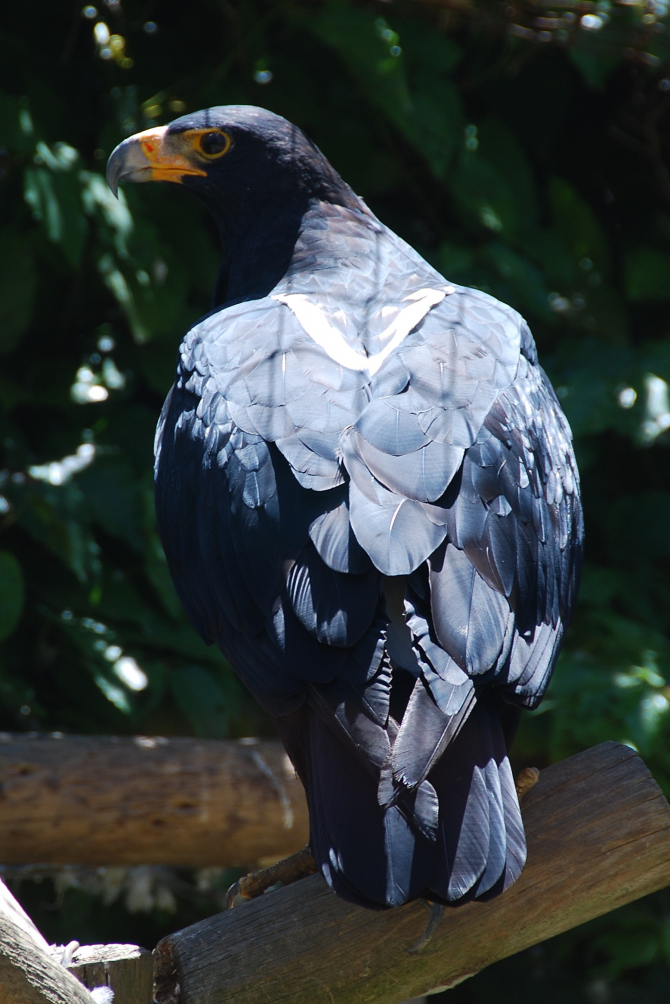
It is a species of falconiform bird of the Accipitridae family. It is a bird of prey spread across sub-Saharan Africa and the south of the Arabian Peninsula. It is a big animal. It measures 75 to 95 cm in length and weighs 3 to 6 kg. The wingspan can reach 2.5 m. They are usually black with a distinctive white V on their back. Juveniles are normally lighter, dark brown with a black face. The female normally lays two creamy white eggs, from which after 45 days the chicks will hatch.
TOP 10:
Screened eagle.
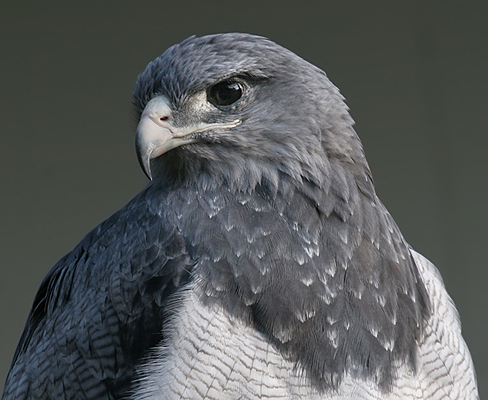
The shielded eagle is a bird of prey that inhabits South America. It measures between 70 and 90 cm, with the female being larger than the male. It has a white ventral area, with thin black strips and a black back with gray feathers on the wings. It lives in mountains or hills where it is lying in wait for the prey, which consists of mammals such as hares, birds, snakes or carrion. It nests in tall trees or in rockies. Its flight is very characteristic, of short wings and with the tail very erect.
TOP 9:
Busardo de Harris.
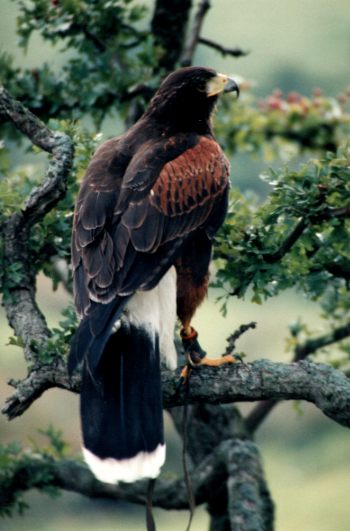
It is a raptor of the order of Falconiformes, belonging to the family of accipítridos (eagles, hawks, buzzards, and kites, among others). It is a medium bird that lives from the southwest of EE. UU to the south of Chile and Argentina. The adult has a dark brown plumage except for tertiary feathers that are reddish in color. The end of the tail is white. It has a length of 60 cm and a wingspan of 1.2 m; The average weight is 900 g. The females are 10% larger than the males. It has strong and sharp claws. Short and curved peak, and at the base a wax covering, conspicuously colored. Wide and rounded wings and when flying they plan a lot. Generally, the female is larger than the male. Nest in trees or crags with clutches of 1 to 6 white or blue eggs with brown spots. Its main diet is based on hares, rabbits, pigeons, rodents and, in their absence, lizards and other reptiles.
TOP 8:
Philippine money eagle.
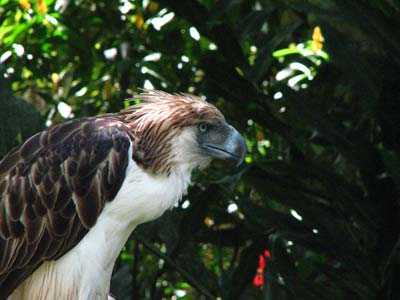
It is a species of falconiform bird of the Accipitridae family. It is the largest raptor in the jungles of the Philippines and one of the largest tropical eagle species. The females that are between 10-20% larger than the males can reach a meter, weigh 7 kilos and have a wingspan of more than two meters, which makes them the largest raptors in the world. Its longevity is 30 to 60 years and more in the animals that are kept in captivity. It feeds on monkeys, Philippine colugo, some snakes, lemurs, monitor lizards, or even large birds, such as calaos.
TOP 7:
Iberian Imperial Eagle.
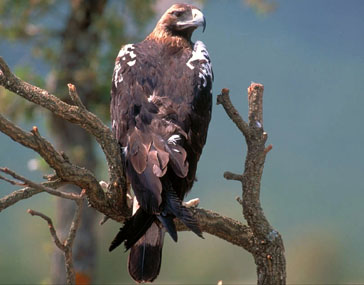
The Iberian imperial eagle is very dark brown plumage throughout the body, except in the shoulders and upper wings, which are white. The nape of the neck is slightly paler than other parts of the body and the tail is darker. In the case of subadult individuals, these are brownish-reddish, without differences in coloration, and do not develop the plumage of mature individuals up to five years of age, when sexual maturity begins. The average size of adults is between 78 and 83 cm in height and 2.8 kg in weight, although females, larger than males, can reach 3.5 kg. The wing span varies between 1.8 and 2.1 m. They live about twenty years on average, having documented twenty-one years in the wild and forty-one in captivity. Their territories cover a large number of habitats, from pine forests in mountain areas to dune systems and marshes in coastal areas. Their greater densities are reached in flat lands or with soft reliefs, with arboreal formations of importance, although not dominant and with good rabbit populations.
TOP 6:
Eagle Steller.
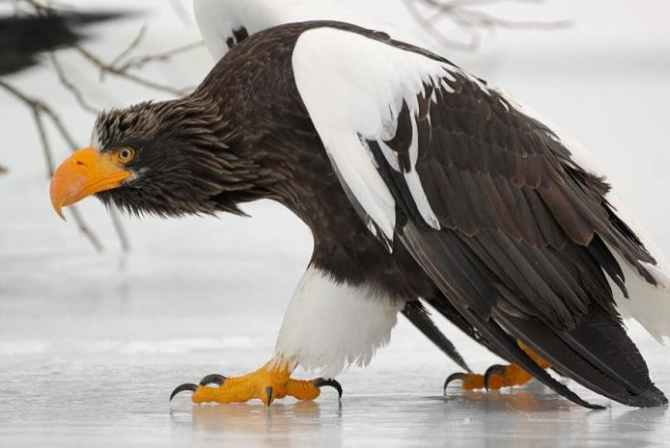
It is indigenous to Korea, Japan, northern China and coastal regions of the Russian Pacific. It is with the South American harpy and the Philippine eagle one of the largest birds of prey in the world, by its size and weight. Every winter, many Steller's eagles migrate to Japan, and some even reach beyond Korea. Other individuals do not migrate, but go to open waters, when winter approaches. The open waters provide these eagles with varied food sources along the coasts and lakes. Steller's eagles subsist largely on the basis of salmon. The annual migration of salmon provides an enormous abundance of these for the steller's eagles, which frequent the coasts and rivers where these fish appear en masse. These birds of prey, hunt both in flight and in diving, taking their prey with claws. They also hunt standing in the water or on the ice waiting for the opportunity for a fish to emerge. Like other eagles, the Steller also steal food from other birds.
TOP 5:
Crowned eagle.
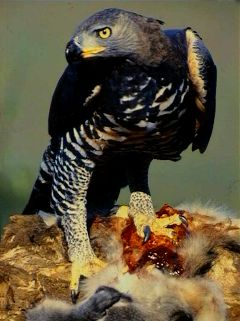
The crowned eagle (Stephanoaetus coronatus) is a species of falcon-like bird of the Accipitridae family, the only one of the genus Stephanoaetus. It inhabits the forests of sub-Saharan Africa, where it is widely distributed.
TOP 4:
Eastern Imperial Eagle.
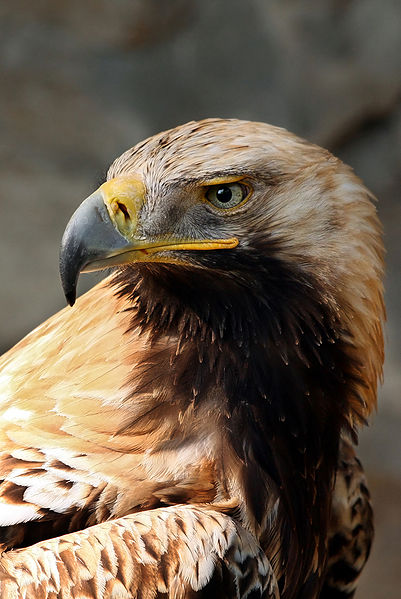
The eastern imperial eagle feeds on rodents, foxes and various birds. It lives in prairie areas dotted with trees, without going into dense forests, especially in Eastern Europe and much of Asia, where it migrates to East Africa in winter. There are small isolated populations in the Austrian and Italian Alps and on the island of Cyprus. It is similar in appearance and proportions to the golden eagle of Eurasia and North America, but a little more modest in size. It has a length of 80 centimeters from the peak to the tip of the tail and 2 meters of wingspan. The males weigh just over 2.5 kilos, while the females, notably larger, can reach 4.5 kilos in weight. The plumage is dark brown throughout the body except for the shoulders, with a characteristic white color, at the tip of the tail, black with a thin white band at the end, and at the nape of the neck, which is light brown or golden.
TOP 3:
White head eagle.
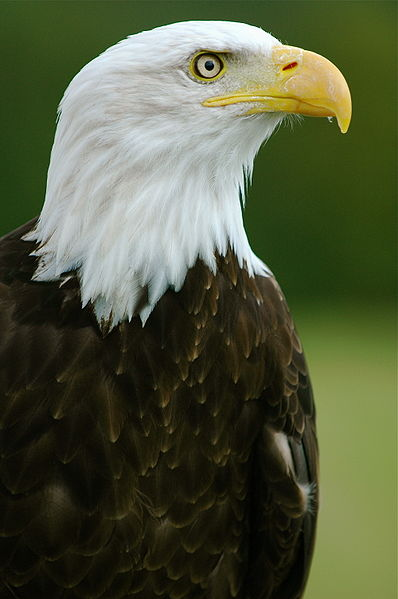
It is a species of Falconiformes bird of the Accipitridae family that lives in North America, famous for being the national symbol of the United States. It appears in the National Coat of Arms of that country. The immature forms have brown plumage bataraz; The distinctive white head and its developed body emerge 2 to 3 years later, before sexual maturity. The smallest specimens are those from Florida. A male adult weighs 2.3 kg, and has a wingspan of 1.8 m. The largest are those of Alaska; the females can exceed 7 kg and have a wingspan of approximately 2.5 m. In the wild, they live close to 20 to 30 years, but have the capacity to reach approximately 50. And they live more in captivity, until they are 60.
TOP 2:
Harpy eagle.
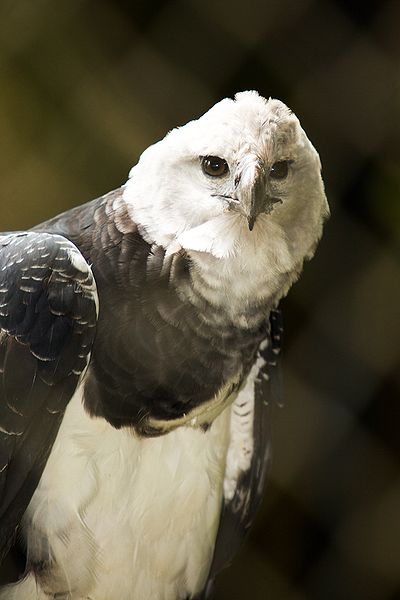
It is a species of falconiform bird of the Accipitridae family that lives in the neotropical zone. It is the largest eagle in the Western Hemisphere and the Southern Hemisphere and the only species of the genus Harpía. Its habitat is the rain forest. It is the most powerful raptor, the average dimensions of the female harpy eagle are 100 cm long, 200 cm in span and weigh 9 kg. The male has smaller dimensions (up to 196 centimeters in wingspan and an approximate weight of 8 kg.) His plumage is gray on the head, black on the back, upper part of the wings and chest, and white on the lower part of the wings. wings and abdomen The tail is black with three gray bands They have a crest of erect feathers on their head The harpy eagle has a strong beak and claws that can reach 15 cm long They can live even 40 years.
TOP 1:
Golden Eagle.
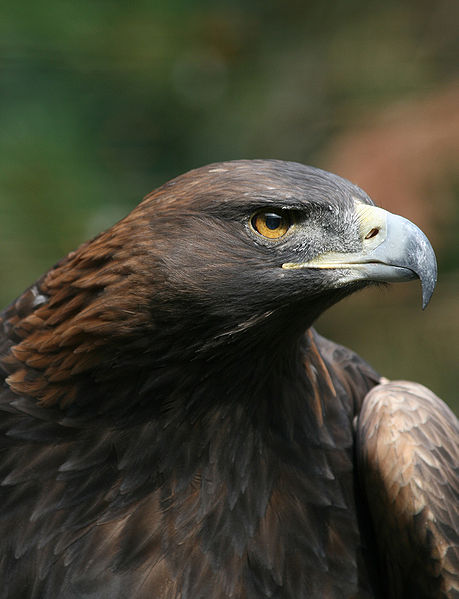
It is a species of falconiform bird of the Accipitridae family. It is one of the best known and widely distributed birds of prey on Earth. Its range covers much of North America, Eurasia and North Africa. It maintains sedentary populations even in several islands like Great Britain, those of the Mediterranean, Japan and Vancouver. The females are larger than the males, being able to reach the meter in length from the peak to the tail and the 2.3 meters of wingspan, and a weight between 4 and 6.5 Kg, while the male, of a size smaller, it reaches between 1.8 and 2 meters of wingspan and weighs between 2.9 and 4.5 kg. The plumage is dark brown, turning golden on the head and neck and white on the shoulders and the tail end . In young individuals, white abounds more in the tail than brown, a relationship that reverses with age. This species is included within the so-called booted eagles, since the legs are covered with plumage instead of having a scaly covering as in the rest. The golden eagle can dive at a speed of up to 240 km / h, being overtaken by very few birds, including the peregrine falcon, which can reach 300 km / h. The golden eagle hunts from the air, and to get it is equipped with the typical weapons of his family: strong legs ending in well-developed claws, hooked beak, great strength and speed and a powerful sight able to locate the dam hundreds of meters away. distance. The dams it can kill are of all sizes and shapes: mice, rabbits, hares, marmots, foxes, wild cats, martens and even young and old or sick individuals of wild goats, deer, wild boars and chamois and flying birds and terrestrial.


